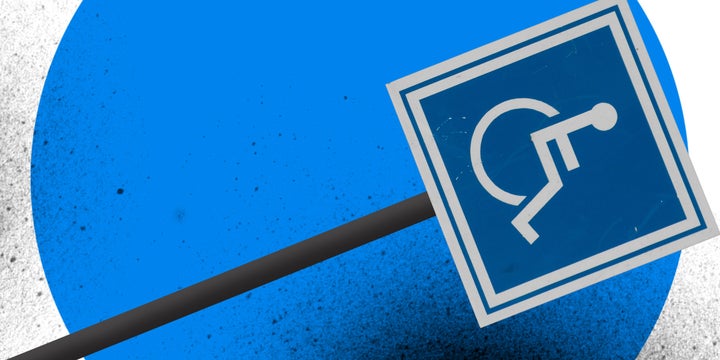
To mark the end of 2018, we asked writers to revisit some of the year’s most noteworthy (for good or evil) events, people and ideas. See the other entries here between now and the new year.
On the morning of Nov. 8, 2018, Jim Knaver and his wife, Anna Hastings (known as Toni), spotted a little smoke in the air from their home in Paradise, California. They knew the risks of fire and had diligently cleared any flammable debris from their property. Jim checked the news for fire danger, he later told NPR, then drove to teach his fourth-grade class. Toni was disabled and didn’t drive, which was a concern, but the couple planned to stay in touch and figured Jim could just drive back if she needed to evacuate. Later that morning, the Camp Fire roared through Paradise at unprecedented speed. Without transportation or even the means to flee on foot, Toni couldn’t get out. Jim lost touch over the phone around 11 a.m. Five days later, search teams confirmed they had found Toni’s remains.
We live in an era of flood and fire. That disasters like the Camp Fire and the devastating hurricanes that have struck the U.S. in recent years are more frequent and more severe because of human-caused climate change is an indisputable scientific fact. Unless something changes, as the waters rise and the air grows thick with smoke, as medicines run out and food systems collapse, as higher, wetter, or more fertile ground becomes the only resource that matters, millions of people like Toni ― millions of poor and non-wealthy, elderly, people with disabilities ― are going to die.
There has never been a threat to humanity quite like catastrophic climate change. First, while most great disasters spring upon us quickly, we’ve known the threat has been coming for almost 200 years. Second, we now have the technology to ameliorate the worst of the consequences, which is again unprecedented in human history. We couldn’t have stopped the Black Death, for example, but the decarbonization of society is possible. Instead, year after year, things get worse, and we still do nothing. Yes, we have solar panels and wind farms, but the rate of fossil fuel use is projected to rise through 2040, and 2018 had the highest level of global carbon emission in history. The green technology thus far deployed will have no more effect than pouring a thimbleful of water on a raging blaze.

When the worst happens, disabled people will die first. The problems extend far beyond wheelchair users who cannot physically evacuate through inaccessible areas. For example, I am mentally disabled. Without access to psychiatric medication, I wonder whether I could stave off suicidal ideation in the face of local climate collapse. Think about all the people who require insulin, chemotherapy, specialized nourishment pumped into their stomach, or people who can’t access a shelter because it has no ramp or because crowds make them panic. The threats extend across categories.
In 2018, the disabled body count from climate-change-driven disasters is still growing. Hurricane Maria hit Puerto Rico in 2017, but the deaths of disabled Puerto Ricans continued into this year. Here are just two cases: José Septiembre, 69, died in San Juan on Jan. 13 due to power outages that interrupted his oxygen. Carmen Román, 55, couldn’t get dialysis and died on the Jan. 15. These deaths were preventable. When Hurricane Florence hit South Carolina this September, Wendy Newton and Nicolette Green, both of whom had been involuntarily committed for mental health reasons drowned in the back of a police van. The deputies escaped. The Sacramento Bee reports that the majority of the 85 people known to have died in the recent fires were disabled or elderly. What’s more, officials were aware of the threat fire posed to its vulnerable residents but did not make adequate plans. Then there’s the smoke.
In November, Alice Wong, a Bay Area resident and global disability justice leader, wrote about receiving air quality alerts as smoke from the fires more than 160 miles away made it dangerous to go outside. She knew she was privileged to stay home with her air purifier but rightly worried for those with lung-related conditions who lacked homes, access to masks, or other medical support.
Marcie Roth, former FEMA official and currently CEO of the National Partnership for Inclusive Disaster Strategies, tells me there’s been a “failure to plan. And a failure to meet the equal access requirements.”
“The climate change adaptation folks are not really talking to the disaster risk reduction folks who are not really talking to the humanitarian relief folks who are not really talking to the CRPD [U.N. Convention on the Rights of Persons with Disabilities] folks who are not really talking to the strategic development/plan folks,” she says. “There’s so much siloing going on.”
In a 2018 article for the Bulletin of Atomic Scientists, Roth argued that lack of planning for inclusive disaster relief puts everyone at risk, writing, “A resilient community will plan for – and with – all of its members.”
We can fix this. Not only can we focus our disaster responses on the most vulnerable people, but we can elect representatives who are willing to say the word, “decarbonization.” As the 2020 Democratic Primary begins (it’s already begun), who will be brave enough to speak up for those already being killed by climate change? To lead us out of the fire and floods?
Not, by all reports, the one percent. As the smoke cleared this fall, a Malibu realtor launched advertisements for a gated community with fire-retardant walls and a private fire-fighting force. They plan to let the rest of us burn.
David Perry is a historian and journalist. He works at the University of Minnesota. Follow him on Twitter: @lollardfish.
